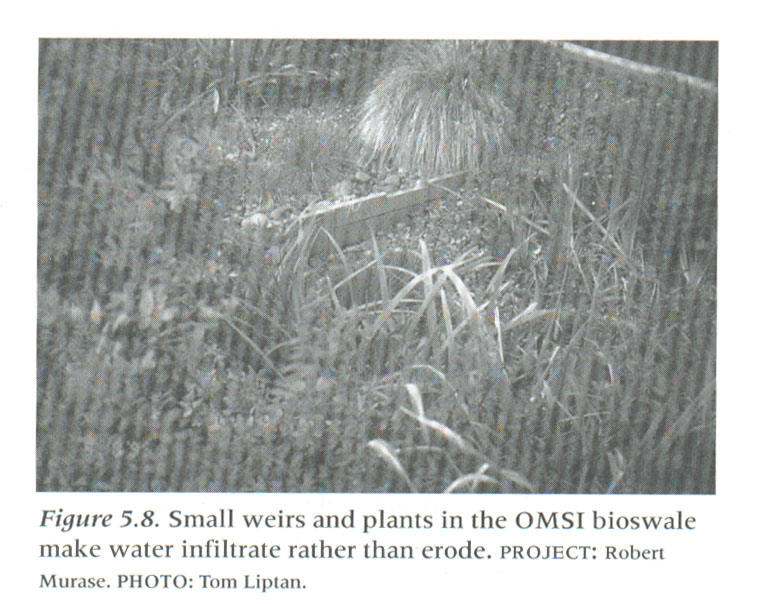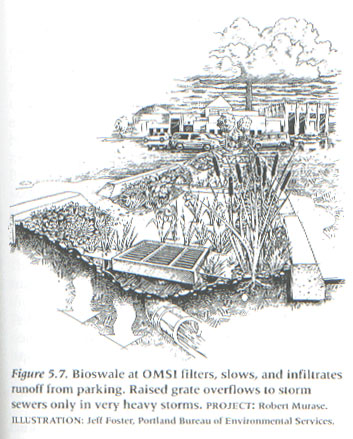| The most effective examples
of water quality treatment swales are from work being done by Robert
Murase’s office. Their design for the Oregon Museum of Science
and Industry incorporates bioswales into the parking lot design as
an aesthetic amenity, while treating stormwater runoff from its 800
parking stalls. Vegetation includes mostly wetland plants—cattails,
bulrushes, yellow iris and other primarily native plants—in
river rock-lined swales with check dams at thirty-foot intervals.
The project has been successful at removing pollutants, and has saved
the client an estimated $78, 000 over a conventional system (see photo).
In Vancouver, WA, the Heritage planned unit development incorporated
a much larger system of over 500 acres of bioswales in the form
of roadside parks and plantings, as opposed to the traditional ditch.
This thoughtfulness in design illustrates the way in which biofilter
systems may be incorporated as aesthetic amenities rather than appended
as obligatory afterthoughts.
|



